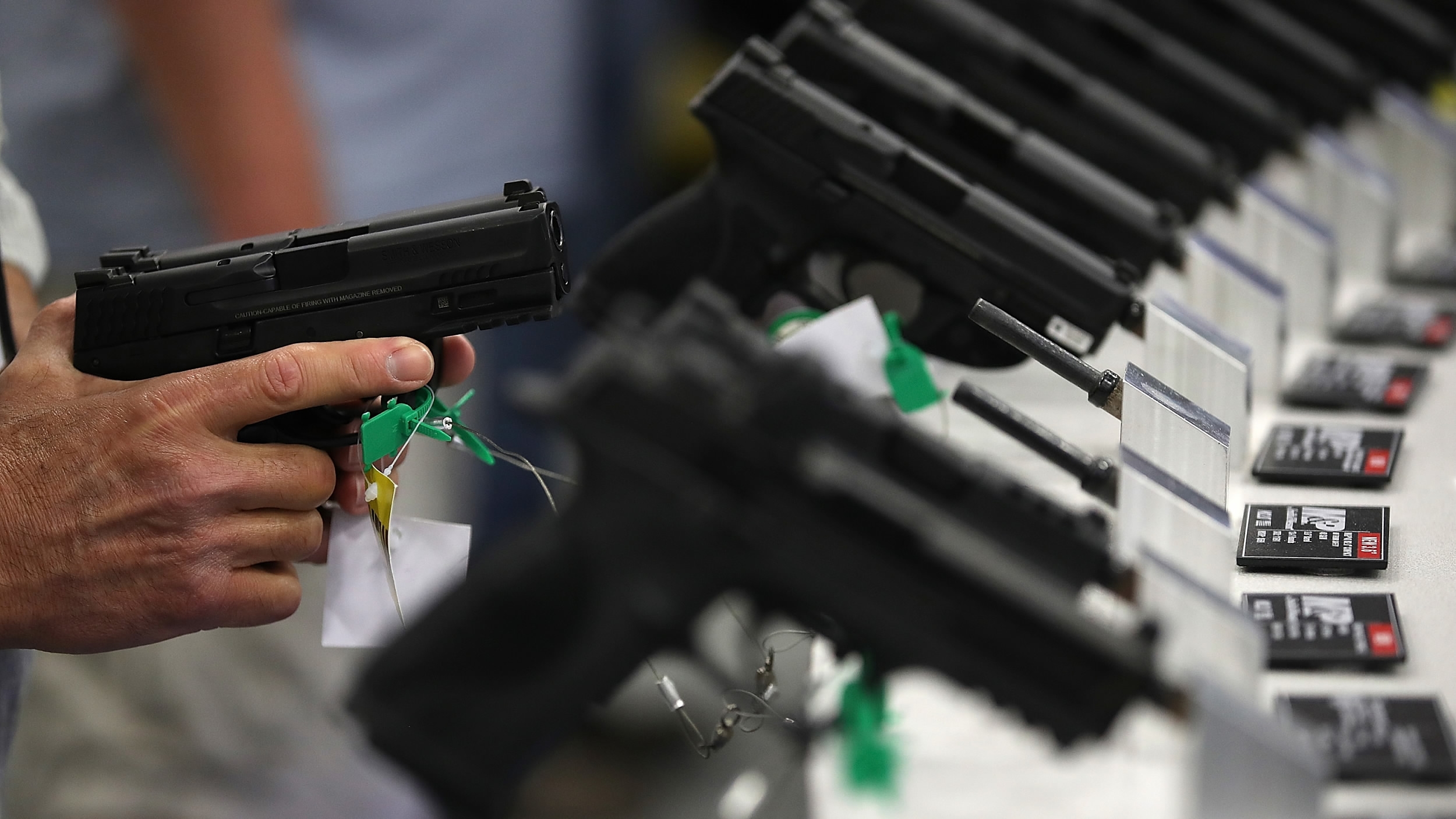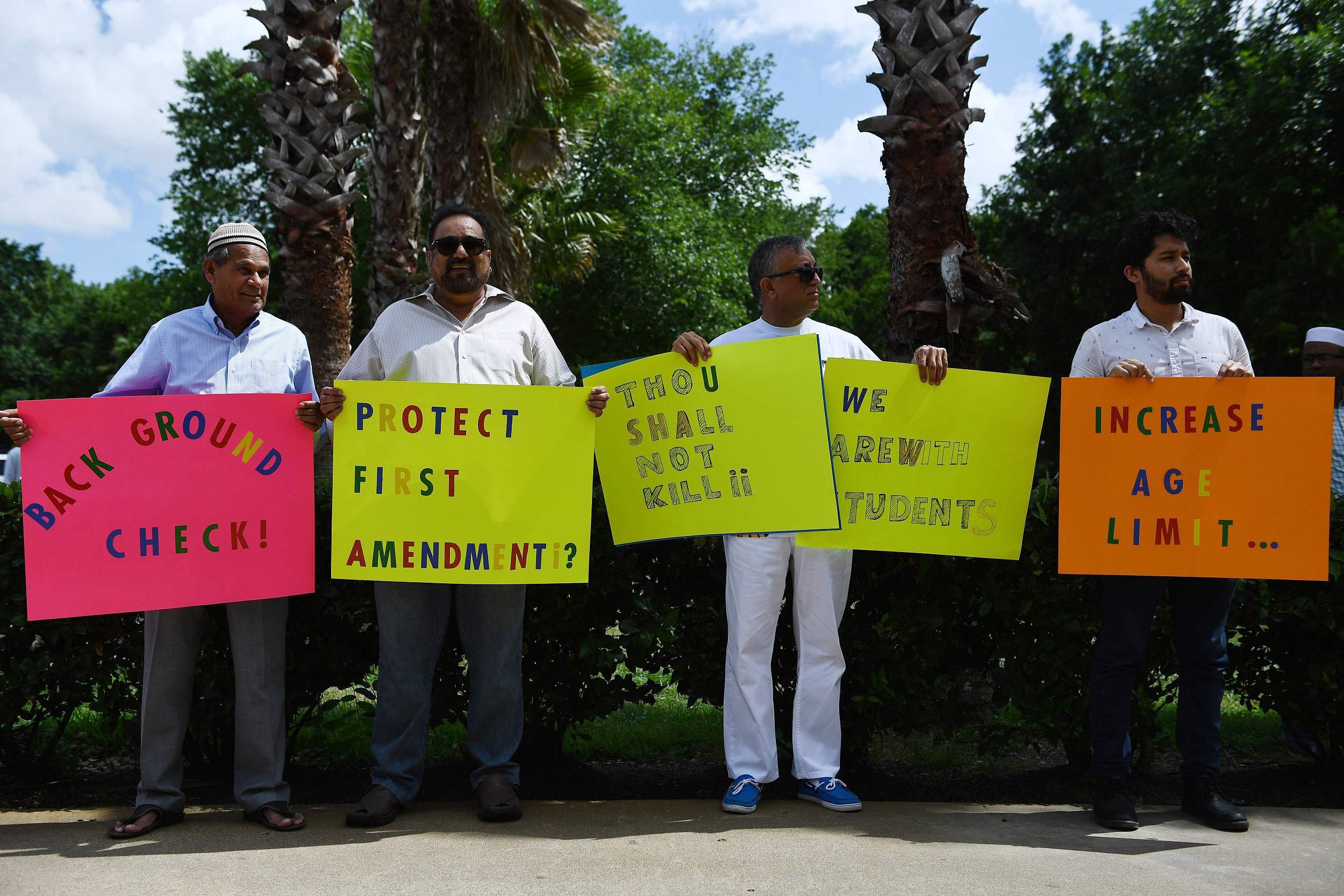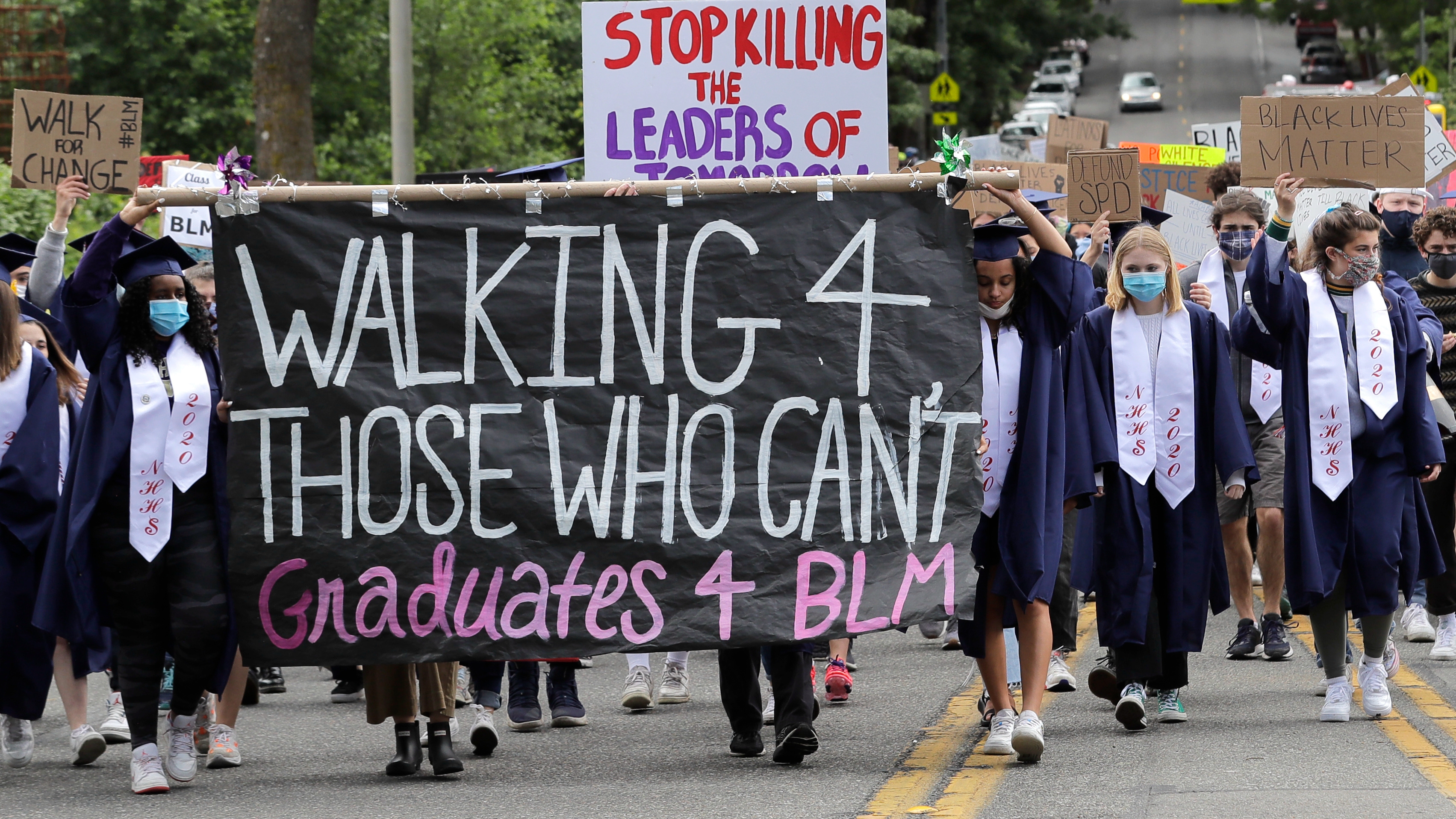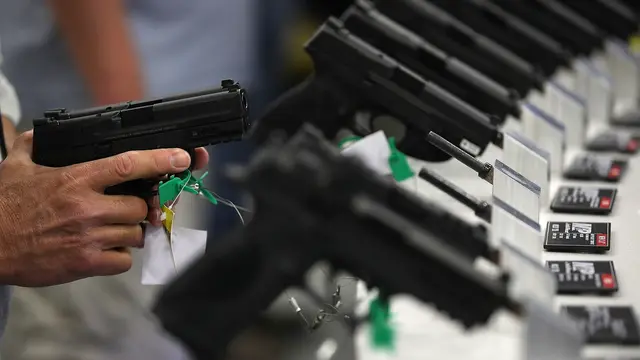
Handguns are displayed during the National Rifle Association's annual meeting and exhibits at the Kay Bailey Hutchison Convention Center, Dallas, Texas, U.S., May 5, 2018. /VCG
The United States mourned more than record COVID-19 deaths in 2020. Homicide rates also surged across the country.
New research released on Monday from 34 major U.S. cities said murders were 30 percent higher than in 2019.
The authors of the study carried out for the National Commission on COVID-19 and Criminal Justice and the philanthropic organization Arnold Ventures said the coronavirus pandemic contributed to a "perfect storm" of factors that led to the rise.
"The fabric of American society has been tested in unprecedented ways in the past year – by the pandemic, the struggle against racial injustice and economic decline," criminologist Professor Richard Rosenfeld said in a release accompanying the report.
"The combination of these stressors and a lack of effective outreach to at-risk individuals likely contributed to the elevated homicide rates we've seen in 2020."
The findings mirror previous predictions that, when the final national figures are in from the Federal Bureau of Investigation, America would have experienced the highest single-year increase in homicides for more than half a century. The previous largest was 13 percent in 1968.
Three big cities lead the way
The three largest cities in the sample, namely New York, Los Angeles and Chicago, accounted for 40 percent of the additional murder victims.
Chicago, a favorite target of Donald Trump when he was president, reported more than 770 murders in 2020, a jump of more than 50 percent, according to its police department. The New York City Police Department says the number of murders in New Yorkrose to 462 last year, up nearly 45 percent from 319 in 2019, to make it the bloodiest year in almost a decade.

A woman wearing a protective mask and goggles walks along Canal Street in Manhattan, New York, April 27, 2020. /AP
Crime data analyst Jeff Asher told National Public Radio last month that the murder spike was occurring in smaller cities as well. Given the widespread nature, he suggested that "national causes" were responsible.
The new study noted that a "precipitous rise" in homicides coincided with the mass protests that followed the killing of George Floyd, an unarmed black man, by a police officer in Minneapolis in late May.
Some experts have speculated whether officers may have used that as an excuse to pull back from street duties nationwide, in the process facilitating increased violence.
"During a period of widespread intense protest against police violence, it's fair to suppose that police legitimacy deteriorates, especially in those communities that have always had a fraught relationship with police," Rosenfeld told the Washington Post in late December.
"That simply widens the space for so-called street justice to take hold, and my own view is that is a part of what we are seeing."
**Dramatic rise in gun sales **
The researchers pointed out that the smallest homicide increases occurred in March through May, when the most severe pandemic restrictions were in place.
Asher said the data shows a rise in murders picked up again in September and October as some of the financial assistance for COVID-19 started to wear off.

Protesters hold signs during the funeral service of Santa Fe High School shooting victim Sabika Sheikh, Stafford, Texas, U.S., May, 20, 2018. /VCG
The Economist said in a report in its January 16 edition that one reason for the increased violence may also have been a boom in firearm sales, especially of handguns. It cited Jurgen Brauer of Small Arms Analytics, which tracks industry sales, as saying that a record 22.7 million handguns and long guns were sold last year, 63 percent more than in 2019.
As with COVID-19, the increased violence is hurting minority communities the most.
"Poor people of color are suffering disproportionately from COVID, suffering from excessive and deadly force from police and suffering from excessively high rates of violence. Those are all concentrated on the very same population," Thomas Abt, the director of the National Commission on COVID-19 and Criminal Justice, told TIME magazine in December.
Higher gun violence may be 'new normal'
The Chicago Tribune, which compiles its own crime statistics weekly, said that of the 789 people murdered in the city in the 365 days up to the last update on January 25, 555 were non-Hispanic Black, 70 Hispanic, 51 non-Hispanic White, three Asian, one Hispanic Black and 109 of unknown ethnicity.
Last month, the city experienced 51 homicides, according to the police (the Tribune says it counted 54), up from 35 from January last year.

Graduates of Nathan Hale High School and other schools wear caps and gowns as they take part in a Black Lives Matter march, Seattle, U.S., June 15, 2020. /AP
Such an increase into the new year should not have come as a surprise, according to criminologist John Roman who says higher rates of gun violence are the new normal in the U.S.
In a blog post headlined "Summer 2021: There is no Vaccine for Violence" on January 31, he says this is because the conditions that helped spur the increase in homicides last year are still in place.
"COVID vaccine is no magic wand for violence in America," Roman says. "It is likely that violence in the United States, particularly in cities, has been reset at a new, higher equilibrium."
The authors of the National Commission on COVID-19 and Criminal Justice study said that subduing the coronavirus pandemic remains crucial for reducing homicide and other forms of violence. But they also recommend concomitant actions to improve the fairness and legitimacy of policing and the justice system in general and to expand proven anti-violence programs in cities hardest hit by crime.
 简体中文
简体中文







